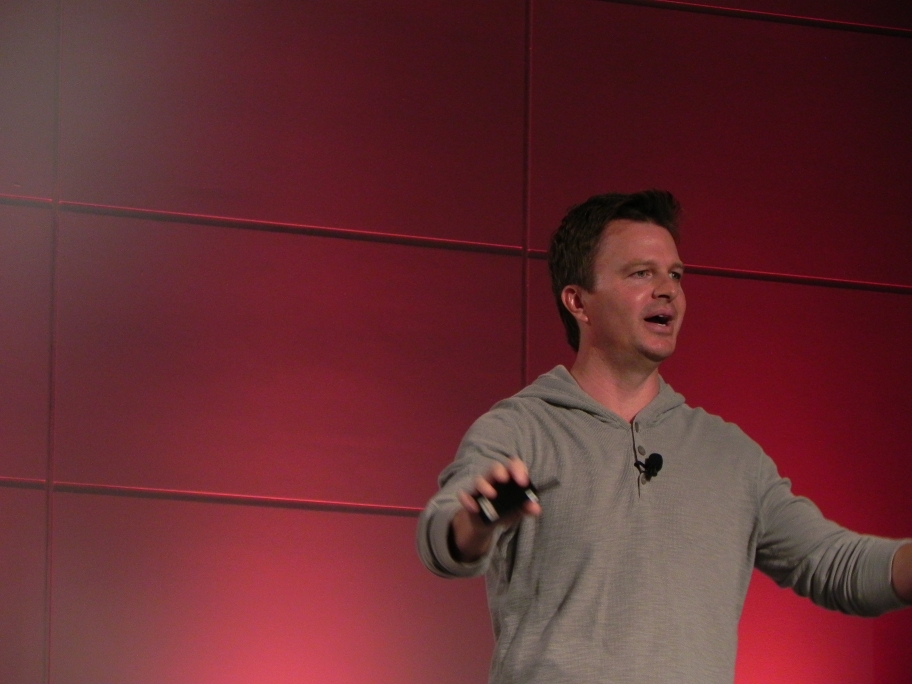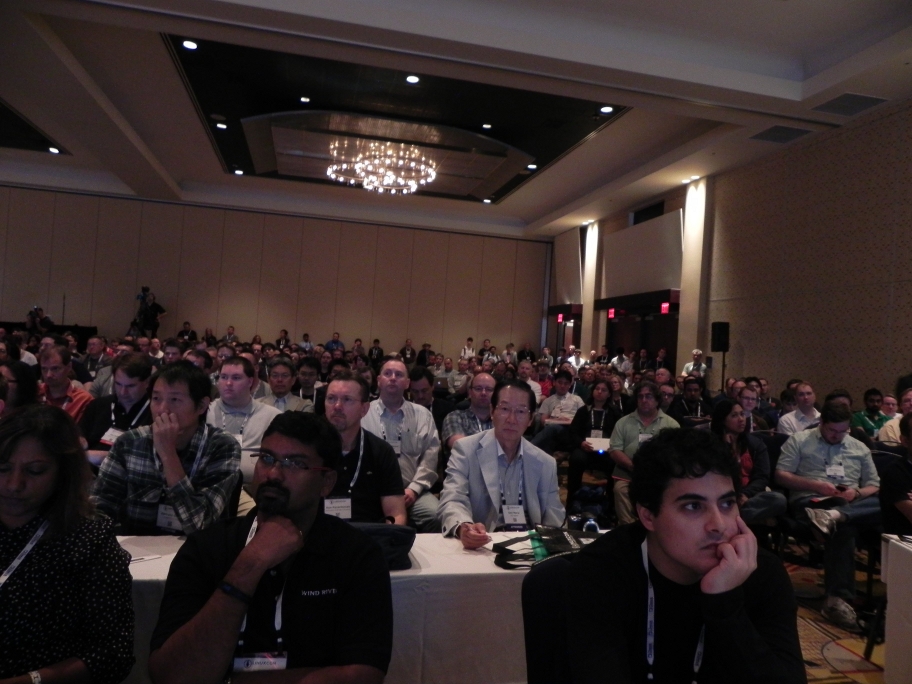What would the world be like without Linux? That’s the question posed by Jim Zemlin in the opening keynote for LinuxCon North America 2011. At first glance, it might seem like a world without Linux would be much the same — but if you think about it (as Zemlin has) things would be a lot different.
 Zemlin’s keynote was a “rouse the troops” celebration of the past 20 years of Linux, its achievements, and the hurdles it has overcome. Zemlin took the stage after playing the 20th Anniversary of Linux video to a packed room.
Zemlin’s keynote was a “rouse the troops” celebration of the past 20 years of Linux, its achievements, and the hurdles it has overcome. Zemlin took the stage after playing the 20th Anniversary of Linux video to a packed room.
To address the question, “what would the world look like without Linux?” He started with a blue screen and then a Windows XP boot screen, then a boot screen again — simulating a world that still runs only on Windows. “This is gonna be about 20 minutes.” After getting serious, he said that the world would be “black and white… stocks would stop trading, trains would stop running… movie special effects would be terrible,” referencing all the services and infrastructure that depend on Linux.
The world would be a worse place without Linux, at least for most of us. Booksellers might be okay with a world without Linux, as Linux powers Amazon but “you’d have no friends” says Zemlin, pointing to Linux’s powering Facebook. Another downside of a world without Linux? Apocalypse. “The world might come to an end with unreliable software powering nuclear submarines.”
Not that everyone has supported Linux. Zemlin talked about some of the resistance that Linux has faced over the years, including Bill Gates’ attacks on the GPL, and SCO’s attempts to take down Linux through litigation. SCO, says Zemlin, did eventually have its day in court — bankruptcy court.
 The attacks weren’t limited to legal attempts to derail Linux, though. Zemlin noted that critics tried to spread doubt about the development model and Linux’s technical suitability to tasks. Not to mention Steve Ballmer’s infamous “cancer” statement… and then Microsoft’s eventual submission of code to the Linux kernel. Maybe the cancer analogy wasn’t entirely wrong, says Zemlin. “Once Microsoft made its initial contribution, it spread… with the release of the 3.0 kernel, Microsoft was one of the top contributors… it’s spreading, it’s spreading!”
The attacks weren’t limited to legal attempts to derail Linux, though. Zemlin noted that critics tried to spread doubt about the development model and Linux’s technical suitability to tasks. Not to mention Steve Ballmer’s infamous “cancer” statement… and then Microsoft’s eventual submission of code to the Linux kernel. Maybe the cancer analogy wasn’t entirely wrong, says Zemlin. “Once Microsoft made its initial contribution, it spread… with the release of the 3.0 kernel, Microsoft was one of the top contributors… it’s spreading, it’s spreading!”
As Linux spread, Zemlin noted that critics from Microsoft and elsewhere tried to pigeonhole Linux to “edge” tasks or as a marginal player. He then contrasted predictions of Linux’s marginalization with Jim Whitehurst’s statement earlier this year that Red Hat will be a $1 billion company by the end of this year.
To be fair, Zemlin also shared some of his innacurate predictions: The year of the Linux desktop in 2007, 2008, 2009, 2010, and 2011. “I’m just going to say it right now. 2012? Year of the Linux desktop, baby!”
Zemlin also showed the video contributed by Microsoft for the 20th anniversary, which got applause and an “awww” from the audience. While Zemlin gave Microsoft props for the video, he noted that Microsoft is still antagonizing Linux, and said it’d be very helpful if Microsoft would “stop suing everybody” if they really want to get along.
The Largest Force in Computing
Despite Microsoft and SCO, Zemlin says that Linux is the “largest force in computing,” because of freedom. Linux, says Zemlin, is larger than one product or one company and it’s not just the technology. “Sharing works,” says Zemlin.
“It’s not about the $10 billion invested in Linux… It’s about something all of you have taught the rest of the world, there are 100s of bestselling books that chronicle what you have accomplished… that you can better yourself while bettering others. That no one of us is smarter than all of us. You have shared this with the world, and that is an incredible accomplishment.”
Thanks to Linux, says Zemlin, “the world is not a scary, black and white, place where the wicked witch rules, it’s a colorful place… thanks to all of you.”



